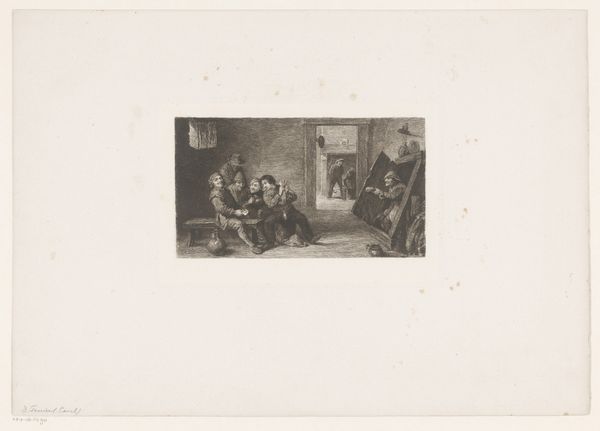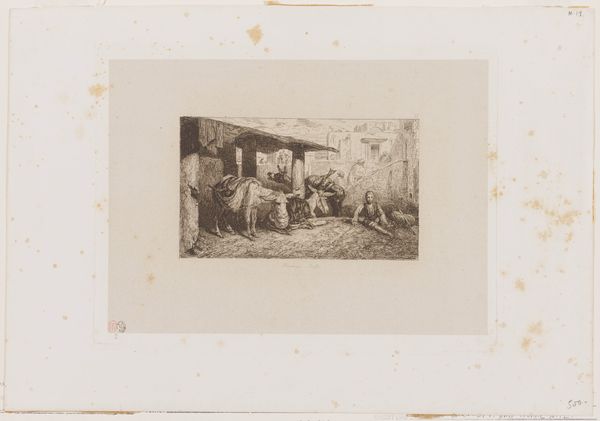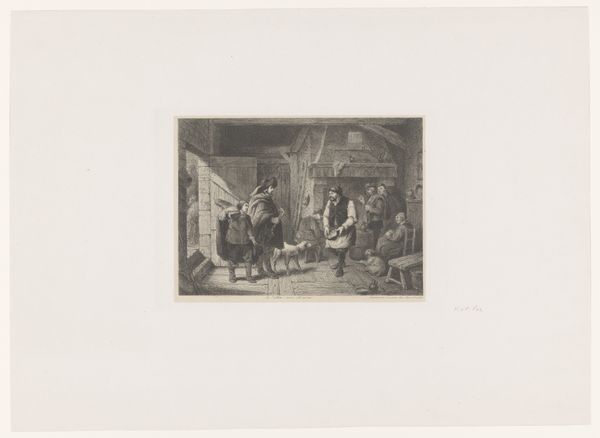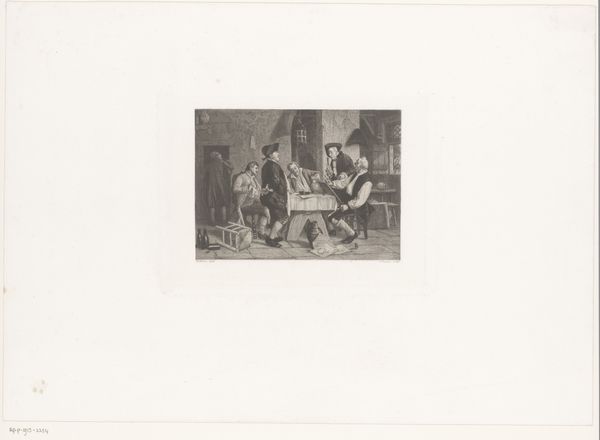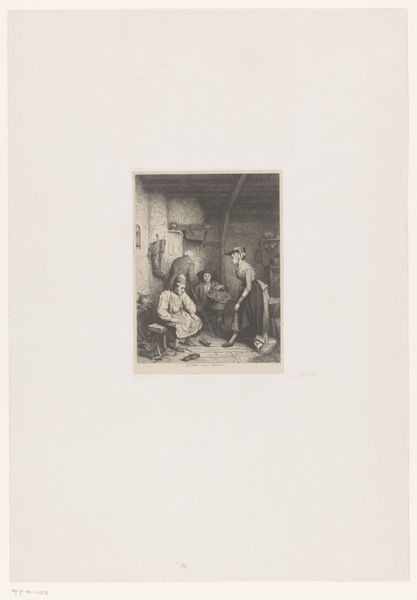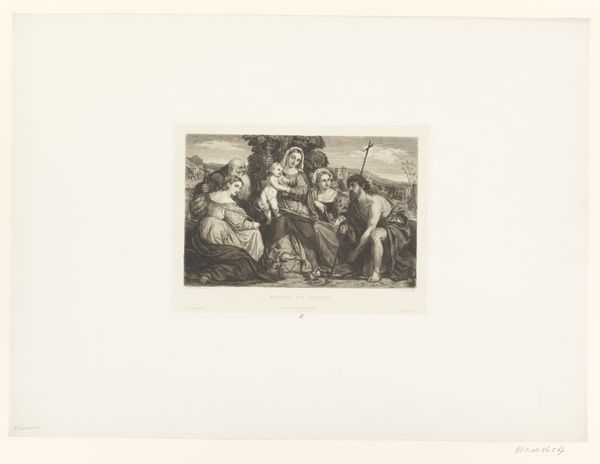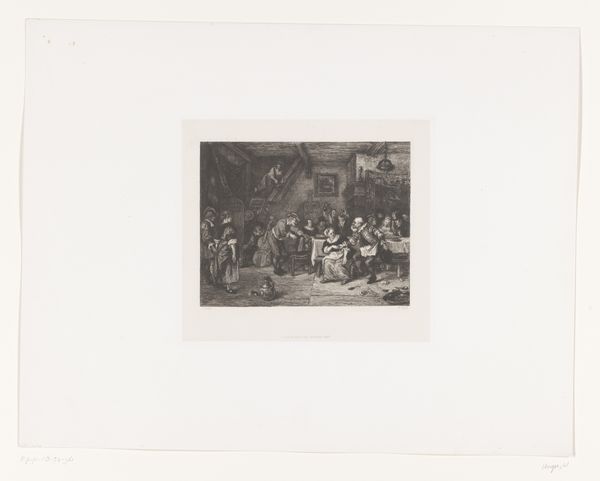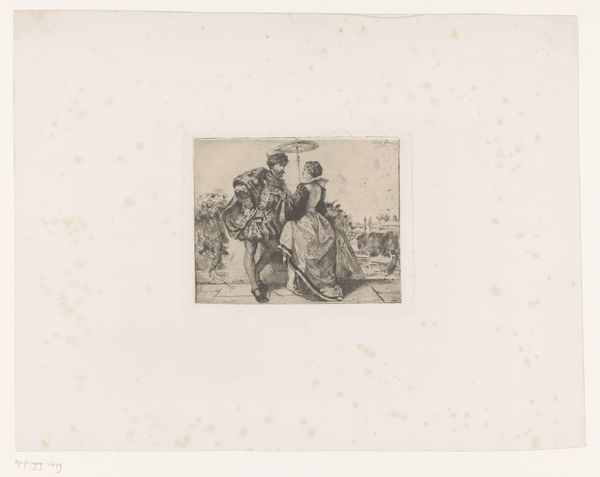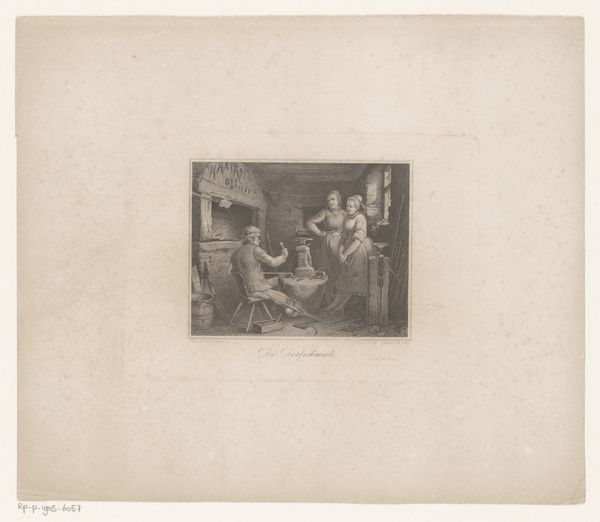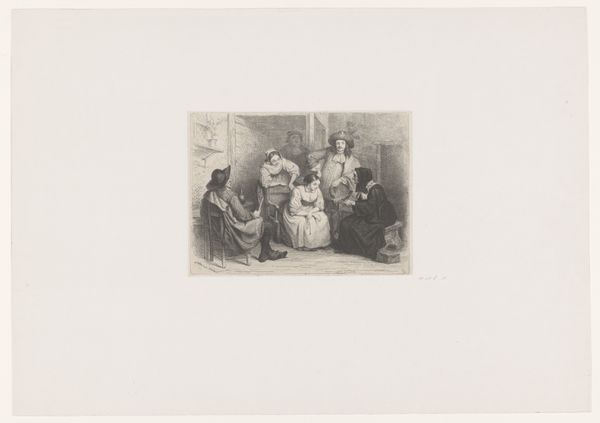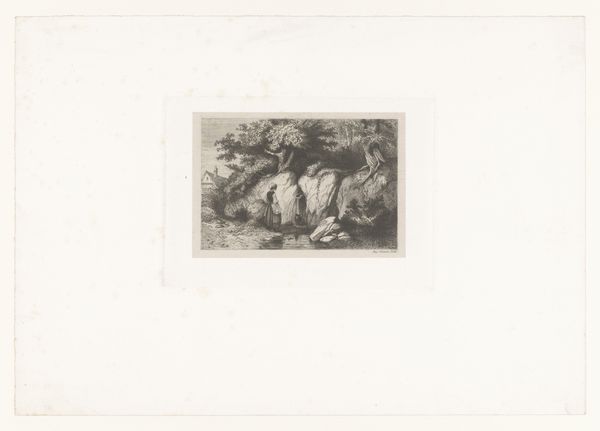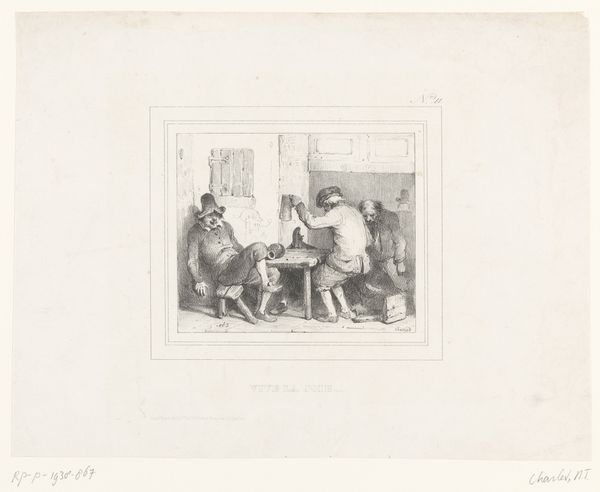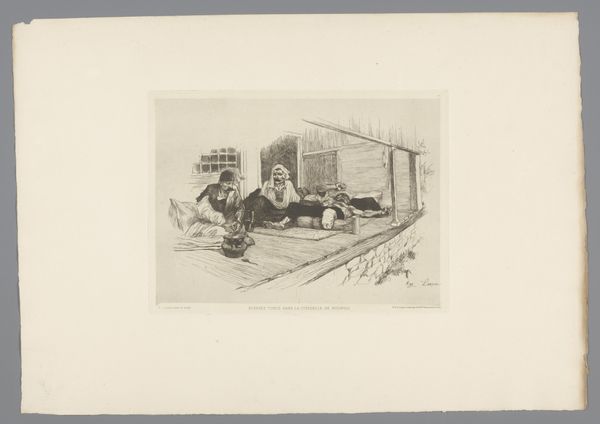
drawing, print, etching, pen
#
drawing
#
narrative-art
# print
#
etching
#
figuration
#
pen
#
cityscape
#
genre-painting
#
history-painting
#
realism
Dimensions: height 138 mm, width 185 mm
Copyright: Rijks Museum: Open Domain
Editor: So, we’re looking at “Arrestatie van een dronken man,” or "Arrest of a Drunk Man," an etching by Charles Billoin from the mid-19th century. The scene it depicts seems quite chaotic, almost comical. What catches your eye in this piece? Curator: What I find interesting here is how Billoin depicts labor and social class through the very process of printmaking. Etching, traditionally a medium for disseminating information and images to a wider audience, is used here to portray a very specific, probably very common, moment in the lives of the working class. The arrest, the drunkenness – these aren't detached, aestheticized visions, but moments born from material realities. Editor: So, the material used influences the meaning of the image? Curator: Precisely. Consider the labor involved in creating this etching – the time spent meticulously etching the lines, the materials needed for the ink and paper. The fact that the scene is of working-class people in a town suggests that, rather than high society, it shows ordinary people whose experiences were deeply rooted in their access to work, food and even law. The details about what type of pen and what type of printing and drawing materials he employed, all become questions to consider when viewing his final result. Editor: That's interesting, because it raises the question: was Billoin critical of the authorities? Curator: It’s tempting to view it through that lens, but I'd argue a materialist reading pushes beyond simple judgements. Was it commentary, or merely reflection? What choices did he make about the kind of paper he printed on, or the style he used, in response to what materials were accessible and affordable? How did he respond in this work to changing industrial times? The context is important in analyzing that aspect. Editor: So, by examining the means of production, we uncover social commentary. I will certainly keep an eye out for that going forward. Curator: Precisely. We discover hidden stories about how people like the artist made a living and understood and reacted to social tensions around them.
Comments
No comments
Be the first to comment and join the conversation on the ultimate creative platform.
